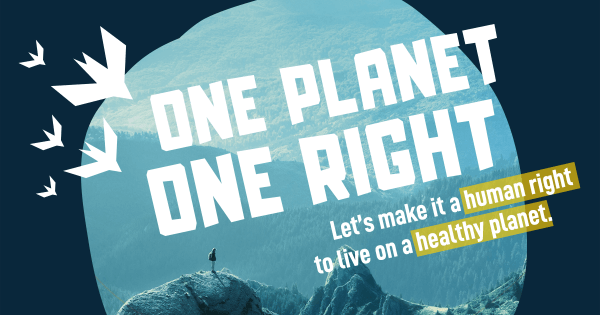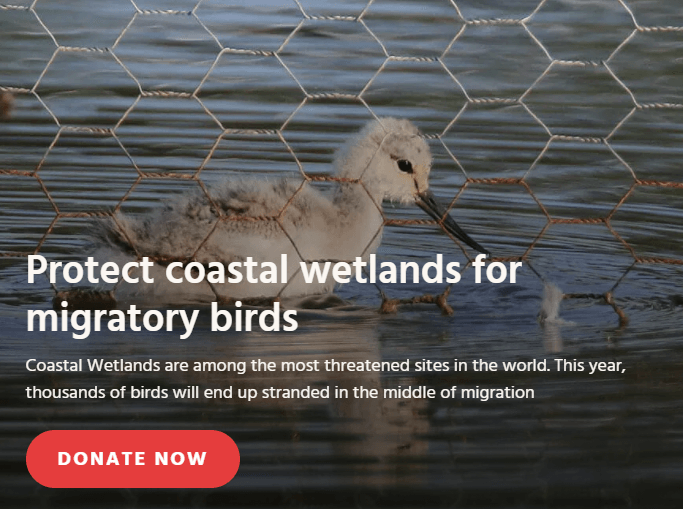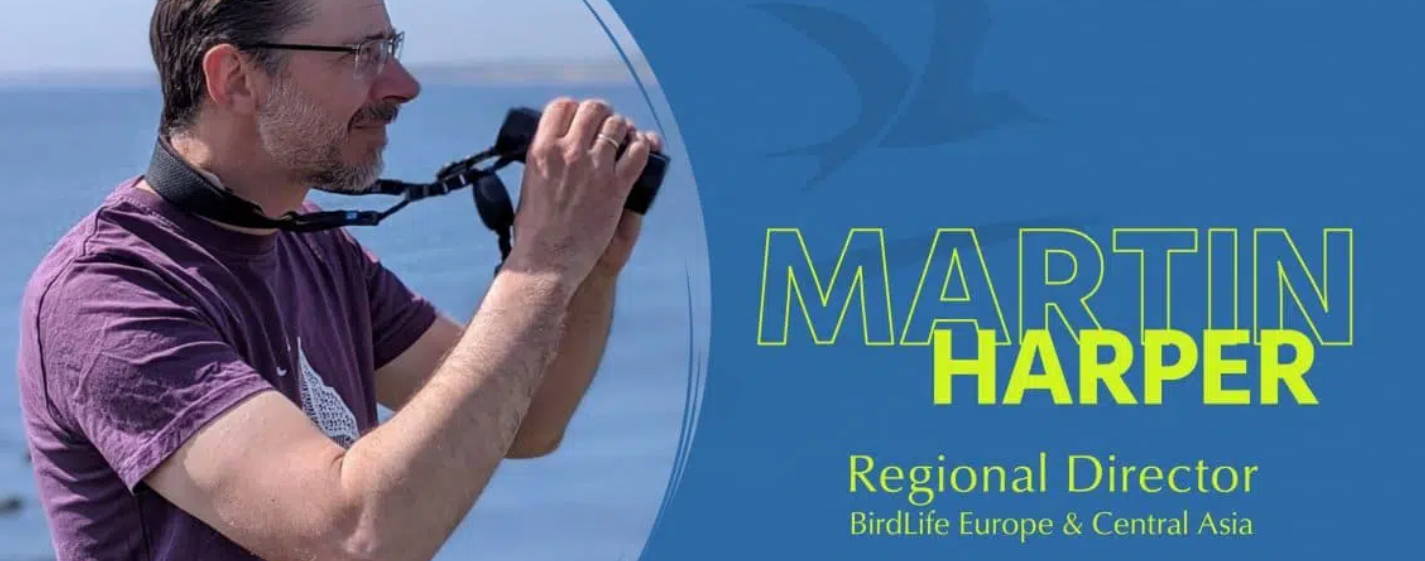
Free birdwatching magazine and guide to finding birds
World Bird News
UK is one of the world's most nature-depleted countries
Researchers say the UK has little room for nature due to development and agriculture.
The UK is one of the world's most nature-depleted countries - in the bottom 10% globally and last among the G7 group of nations, new data shows.
It has an average of about half its biodiversity left, far below the global average of 75%, a study has found.
A figure of 90% is considered the "safe limit" to prevent the world from tipping into an "ecological meltdown", according to researchers.
The assessment was released ahead of a key UN biodiversity conference.
Biodiversity is the variety of all living things on Earth and how they fit together in the web of life, bringing oxygen, water, food and countless other benefits.
Prof Andy Purvis, research leader at the Natural History Museum in London, said biodiversity is more than something beautiful to look at.
"It's also what provides us with so many of our basic needs," he told BBC News.
"It's the foundation of our society. We've seen recently how disruptive it can be when supply chains break down - nature is at the base of our supply chains."
It worked! Rare birds recovering thanks to ambitious island restoration
It was the most ambitious and logistically challenging island restoration project to date. The aim in 2015: to turn some of the world’s rarest birds back from a path to extinction by removing introduced predators from remote French Polynesian islands. Now the birds are truly bouncing back, giving hope for future restorations. Out in the middle of the Pacific Ocean, there is a group of islands that host some of the most beautiful and unique birds in the world. The Acteon and Gambier Archipelago, part of French Polynesia, lies approximately 1,600 km from Tahiti, the nation’s political centre. Boasting some of the highest numbers of endemic birds in the tropical Pacific, this far-off piece of paradise is a nature-lover’s dream.
Sadly, even these remote islands have not escaped human interference. Like numerous islands in the Pacific, for many years they were under severe threat from introduced species. From predators including rats to aggressive tangles of non-native vegetation, havoc was wrought on these delicately balanced coral atoll and volcanic ecosystems.
For the islands’ birds, it is a life or death situation. In the Pacific, up to two thirds of all bird extinctions are directly linked to the introduction of alien species. For some of the rarest birds in the world – like Tutururu, or Polynesian Ground-dove Alopecoenas erythropterus (Critically Endangered), and Titi, or Tuamotu Sandpiper Prosobonia parvirostris (Endangered), that evolved in the absence of mammalian predators – time was running out.
More on this story Birdlfe International
One Planet One Right
Over a million species are at risk of extinction. The climate is heating like never before. And we’re in the midst of a deadly pandemic. All a function of our destruction of nature.
Our planet is fighting for its life.
The science is clear: the reckless exploitation of nature is at the root of these planetary crises, threatening our very survival and that of many other species.
That’s why we want the United Nations to recognise a new human right: the right to a healthy natural environment. It’s an emergency. And we need you to
sign and share this petition to help make it a reality.
Protect coastal wetlands for migratory birds
Coastal Wetlands are among the most threatened sites in the world. This year, thousands of birds will end up stranded in the middle of migration.
Help us protect these vital sites from destruction.
Coastal Wetlands are among the most threatened sites in the world. This year, thousands of birds will end up stranded in the middle of migration, with nowhere to eat or rest on their long journeys. Exhausted and starving, many of them will sadly die. The last thing they see is often a concrete wasteland where their favourite wetland habitat used to be. But it doesn’t have to be this way.
Please donate here
The 2030 Challenge: stop the rot, protect the best and restore the rest
Globally, one in eight bird species are at risk of extinction; and within the European Union, 42% of species continue to decline, 11% are at risk of extinction, and just 15% of habitats are in favourable condition. This erosion of our natural environment is driven by unsustainable land use (such as agriculture and forestry), overexploitation of species (from fishing to hunting) and the introduction of non-native species (which is particularly damaging in wetlands or on islands where native animals are vulnerable to non-native introduced predators such as rats and mice).The climate crisis is compounding these threats, and it is set to get a lot worse....More
CAP Strategic Plans: New assessment shows Member States fall short of saving nature
Many scientists and NGOs, including BirdLife, have been raising the alarm about further weakening the already limp environmental ambitions of the CAP reform and the fact that this generously funded policy will fail short of what is needed to tackle the unprecedented climate and biodiversity crises the planet is facing.
But these warnings fell on deaf ears of the European Commission throughout the process. In fact, this CAP deal was described by the Commission’s Vice President Timmermans as a “real shift towards a greener & fairer CAP: we’ll dedicate more farmland to biodiversity, reward farmers who go the extra mile for climate & nature, and more funds will flow to small farms.”
To be fair to Mr Timmermans and his optimism: in theory and in an ideal world, the new legal framework does allow for a greener and fairer CAP, as it will be implemented through CAP Strategic Plans that are currently being drafted by the 27 EU countries. However, as history has shown with previous CAPs, when Member States have the chance to use EU money to increase environmental ambitions, they tend to do the very opposite.
BirdLife Europe and the European Environmental Bureau (EEB) have worked with agriculture experts to understand what is really happening on the ground. National experts from 22 countries screened the available drafts against seven key criteria stemming from the EEB’s 10 Tests for a Green Deal-compatible CAP. Based on multiple-choice questions, this assessment was translated into a traffic light benchmarking system of how countries score on each criterion. Our snapshot of the ambition of the national CAP Strategic Plans is based on the best available information by the 10th of November, and the final assessment might be different.
More on this story Birdlfe International
Please note that we receive many hundreds of e-mails weekly. We will try our best to respond to your enquiry as efficiently and quickly as possible. If your enquiry relates to reserve and birding site access, please contact the relevant organisation. Sick, injured or young birds to RSPCA.
Enquiries about the sale of used birding equipment or ornithology books should be sent to the contact below.
Thank you
Join our mailing list
Contact Us
We will get back to you as soon as possible
Please try again later






